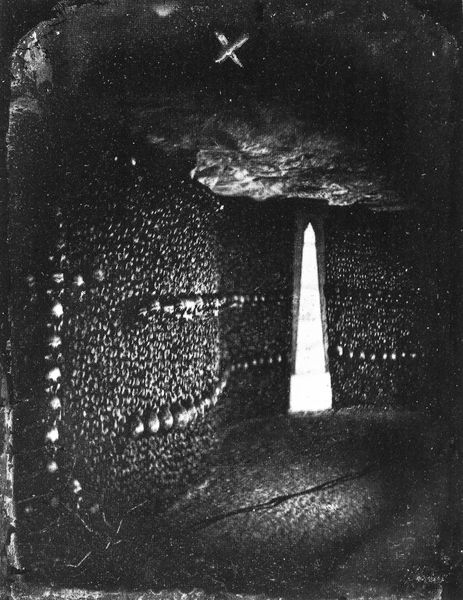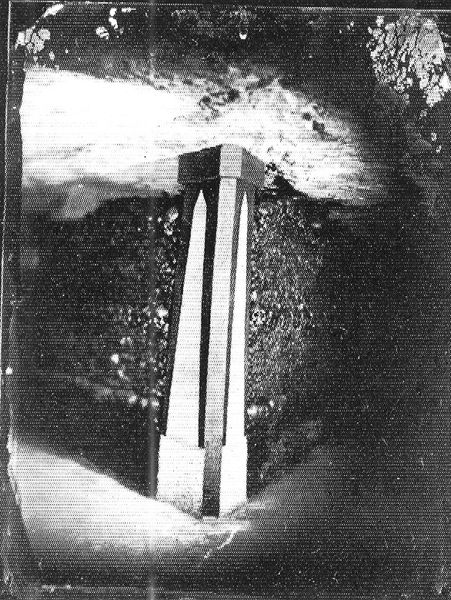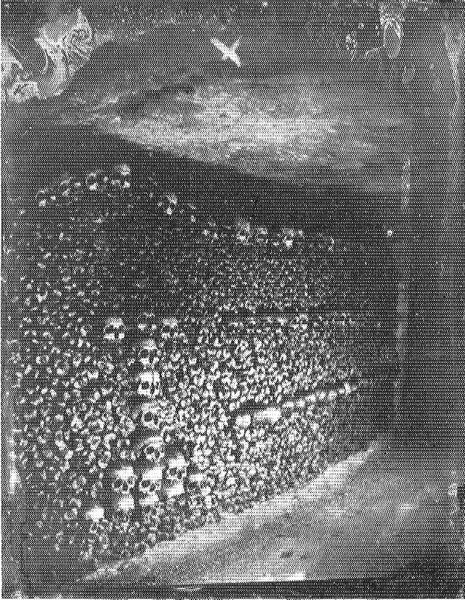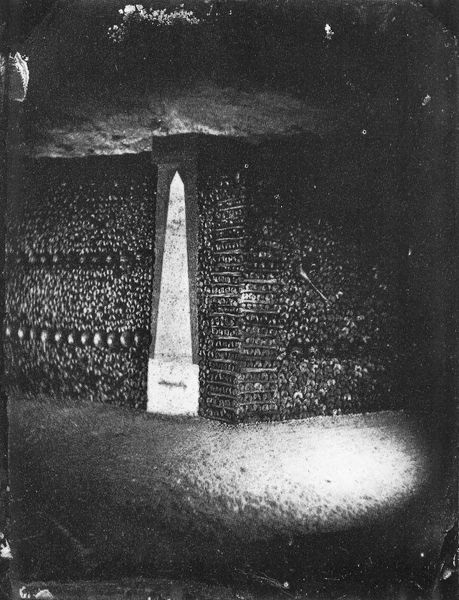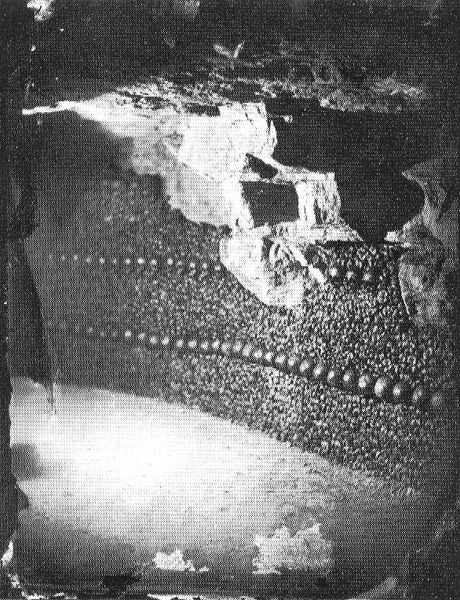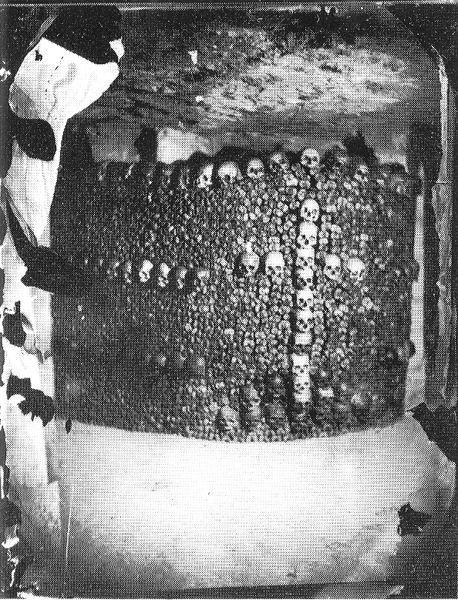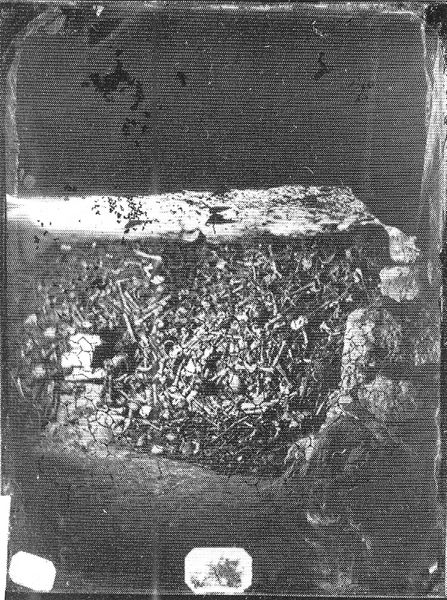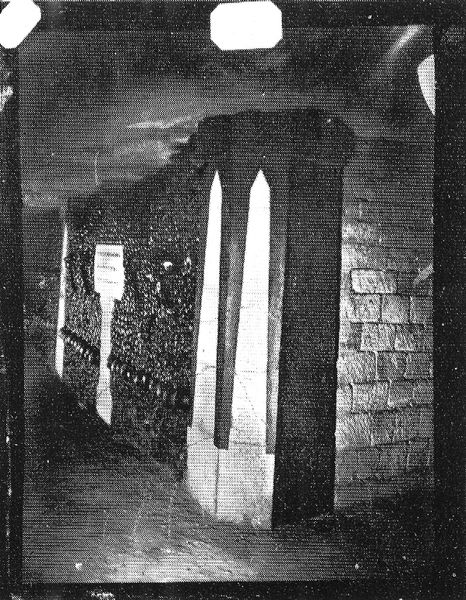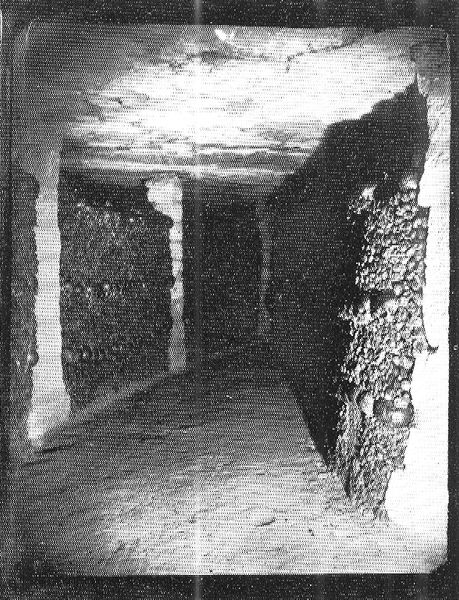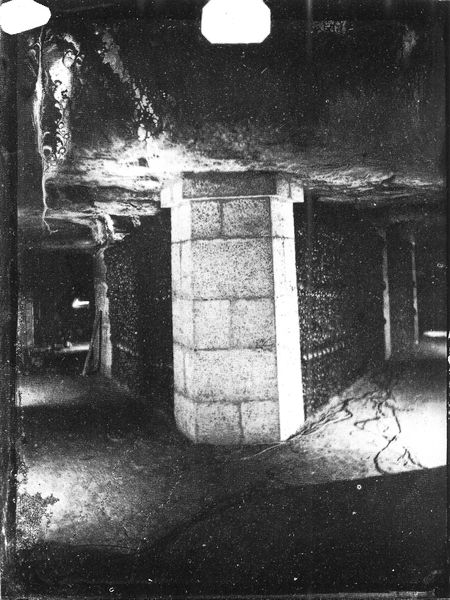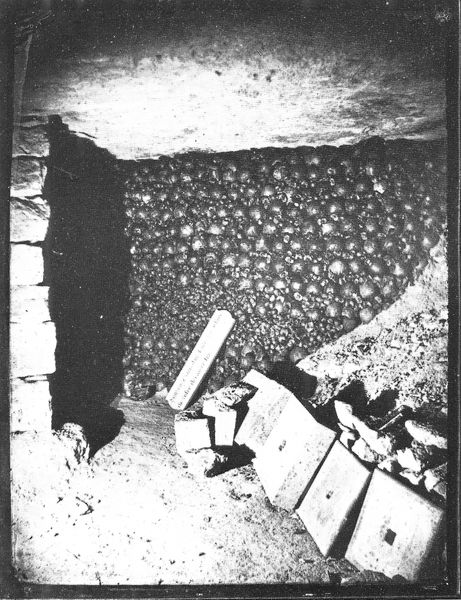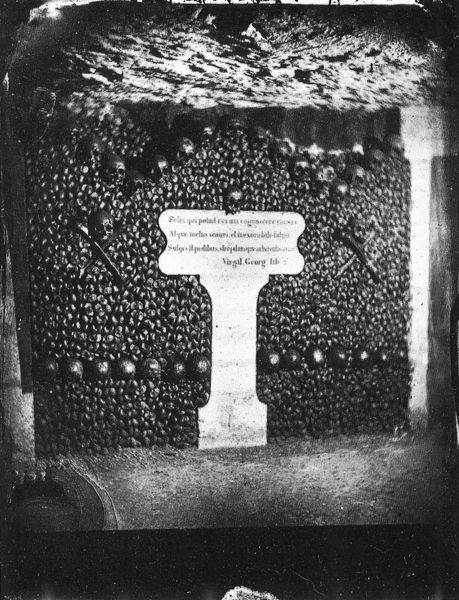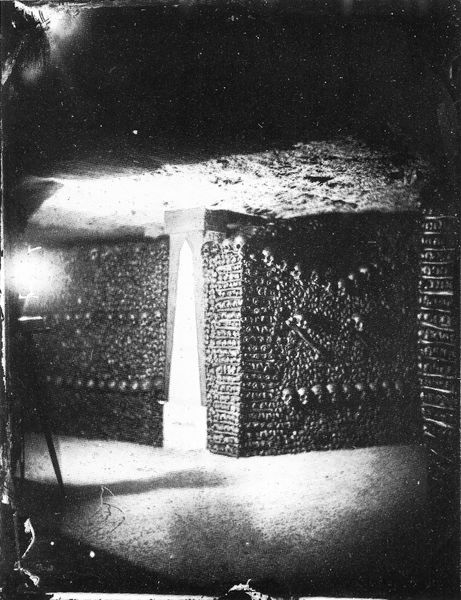
photography, gelatin-silver-print
#
landscape
#
photography
#
gelatin-silver-print
#
history-painting
#
realism
Copyright: Public domain
Curator: This gelatin-silver print, titled "Catacombes De Paris", was captured by Felix Nadar around 1861. A somber, monochromatic study of the Parisian catacombs, it is dominated by carefully arranged stacks of human skulls and bones. Editor: A chilling still-life that's unsettling. I feel an almost primordial fear bubbling up. What strikes me immediately is how Nadar has captured light emerging in that tunnel-like space. Curator: The mastery of light and shadow, is quite remarkable given the constraints of early photographic techniques. See how Nadar uses it to organize the pictorial space. He carefully placed a light source, and thus transforms what would be a confusing space into a geometric meditation. It emphasizes the formal arrangement, turning the morbid into almost architectural order. Editor: But beyond the technical bravado, there’s the physical labor itself. This isn't just stumbled-upon arrangement. Imagine the workers, probably poorly paid, carefully arranging these bones for some public viewing. What were the health implications of constant interaction with the decaying matter, the social hierarchy of this work. Curator: And what about the semiotic weight of that order? Those skulls staring. What stories are locked into each face of the stacked skeletons. It reminds me so strongly of Baroque Vanitas paintings which use visual allegories, like skulls, to comment on earthly possessions. This work also pushes towards those limits. The limits of artifice. Nadar's choice to highlight structure with dramatic contrast shows this is less documentary and more meditation. Editor: Precisely! And to build on that idea, one cannot disassociate these orderly stacks from the history and implications of their creation. The photograph then stands as a chilling document of labor conditions, disposal rituals, and also as an early study in the visual processing of immense quantities of bones in a contained architectural form. Curator: Considering the meticulous lighting and considered composition, I would describe this photography as an artifact where Nadar engages with themes related to death. His masterful utilization of tonality is a feat, converting historical ossuaries to more. Editor: Perhaps through it, the piece is both a testament and critique to order—showing the many faces, the artful and morbid, of materiality itself.
Comments
No comments
Be the first to comment and join the conversation on the ultimate creative platform.
